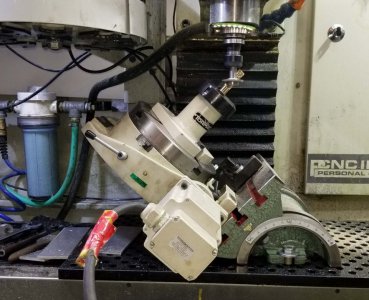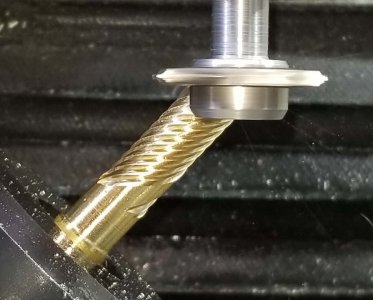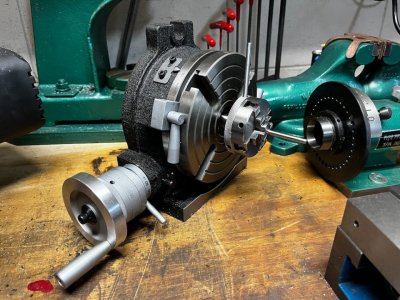Late to the party so not adding too much. As has already been said, you'll need some sort of indexing device like a dividing head or rotary table. I haven't read every post above so sorry for the repeat(s). Cutters are sold in sets of 8 with each size covering a range of gear teeth. The USA numbering system and Import system are flipped relative to each other: A USA #8 cutter is for 12-13 teeth. The equivalent Import cutter is a #1. No idea why the difference, but be careful if you're buying individual cutters off eBay.
Another thing I would suggest is to shut off your phone, turn off your shop radio and tell your significant other to leave you alone while you are cutting the gear. I've found when cutting a gear I get into a repetitive routine: Make a pass, unlock the dividing head, index to the next tooth, rotate the sector arms (or whatever the adjustable arms are called), lock the dividing head and make the next pass. If you get interrupted, it'll increase your chance of screwing up.
I haven't posted one of my biggest fails while cutting a gear, so here goes. I had a Rockwell 10" lathe with a taper attachment. The Rockwell's have a QCGB with 27 threads per inch standard. I'd never cut a 27 tpi pipe thread on the Rockwell, but being really anal I hated taking a tool from my arsenal when I sold the lathe. I have a Clausing 5418 which will cut 27, but it doesn't have a taper attachment. I also have a Grizzly G0709 with a taper attachment, but the QCGB goes from 26 to 28.
The Grizzly has a 33-tooth gear in the gear train, and the QCGB can do 18 tpi. My thought was to make a 22-tooth gear and swap it in for the 33-tooth which would slow the QCBG by 50%. That'd give me 27 tpi on the 18 tpi setting. I bought an import gear cutter of the correct modulus off eBay for under $15. By the way, it worked fine on CRS for the one gear I cut. I made an arbor for the cutter which had something like an 18 mm hole. Did the math on the OD of the blank, cut the gear on the Bridgeport using my L&W dividing head. Made a metric bushing for a metric broach to cut a keyway, cut the keyway. Then went to put my new fangled gear on the lathe and FAIL! I'd failed to look at the center to center distance in the gear train; my new gear wouldn't mesh with the appropriate gear because the 76-tooth gear that it's ganged with hit the shaft of the gear below. Oh well, it was good practice!
If you want to get really fancy, I attached a CNC routine for cutting spur gears on a Tormach (probably work on others too) with a 4th axis. I'll end up going this route when I get back to getting my G0709 27-tpi capable. I'm thinking of making a 99-tooth gear to replace the 66-tooth one at the bottom of the quadrant.
Another aside, plain dividing heads won't cut every number of gear teeth. The formula for indexing turns between teeth is typically "40 / x" where 'X" is the number of teeth (typical 40 to 1 ratio on the crank vs. the spindle on a dividing head). For a 20-tooth gear, it's 40/20 or 2 turns. If it's a 22-tooth gear as in my case, it's 40/22 or one complete rotation, 20/22 of an additional rotation. I put a 33-hole plate on DH and went 30 holes (30/33 is the same ratio as 20/22). That's where the sector arms come into play. Those were set for 30 holes apart. Spin the indexing crank one full revolution, then a second one until the pin is at the hole at the sector arm. Rotate the sector arms in prep for the next tooth. And "Yes", I'm making it more complicated that it actually is.
Have fun! The formulas for sizes are pretty simple. There is something very satisfying about cutting your own gears!
Bruce
Metric arbor for an import gear cutter
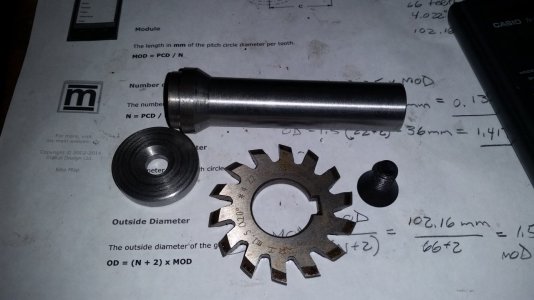
Last pass on the BP
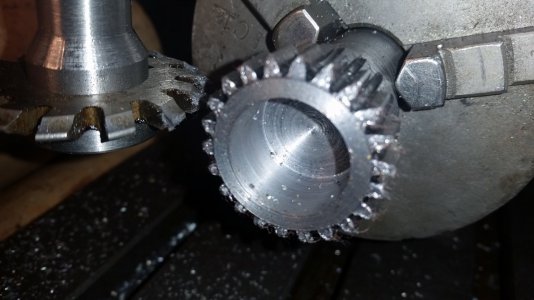
Broaching a keyway
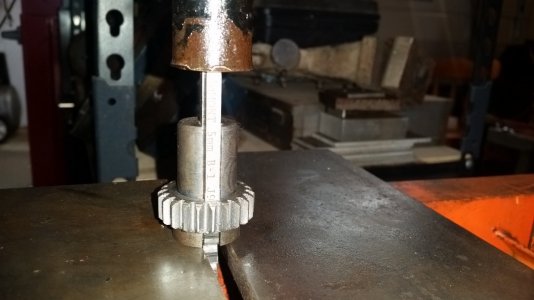
Grizzly G0709 change gears. Plan was to replace the 33-tooth gear with a 22-tooth to slow the gear box by 50% (18 tpi becomes 27)
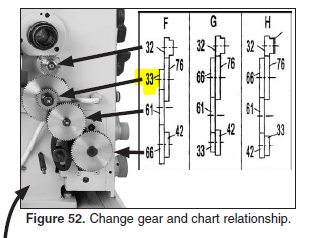
And . . . FAIL! The large gear at the top is ganged with the 22-tooth gear I made. Problem is the 76-tooth gear bottoms out on the shaft for the 61-tooth gear below before the 22-tooth gear meshes.
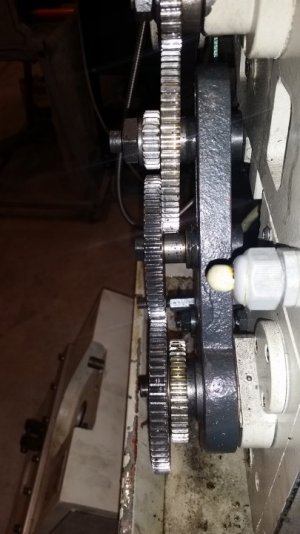
I think these were 50 tooth gears.
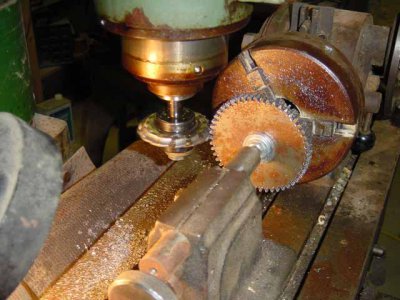
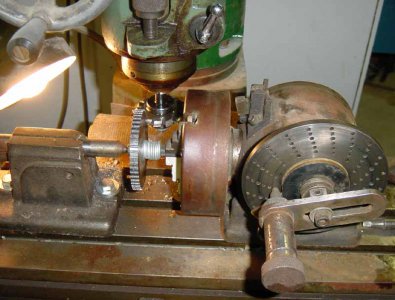
Or get really fancy and cut some helical gears!
